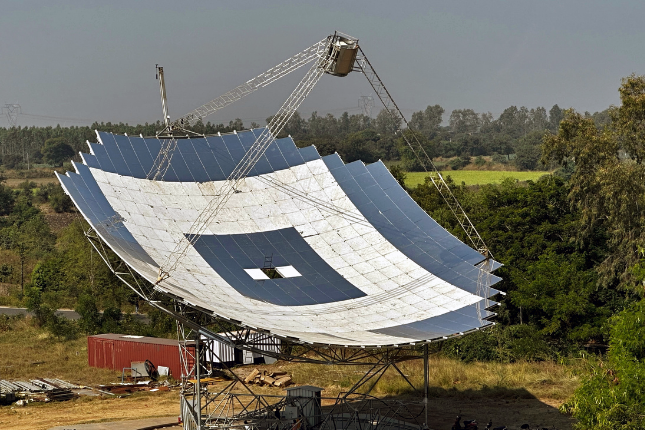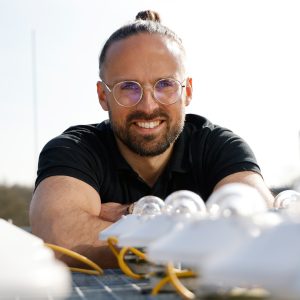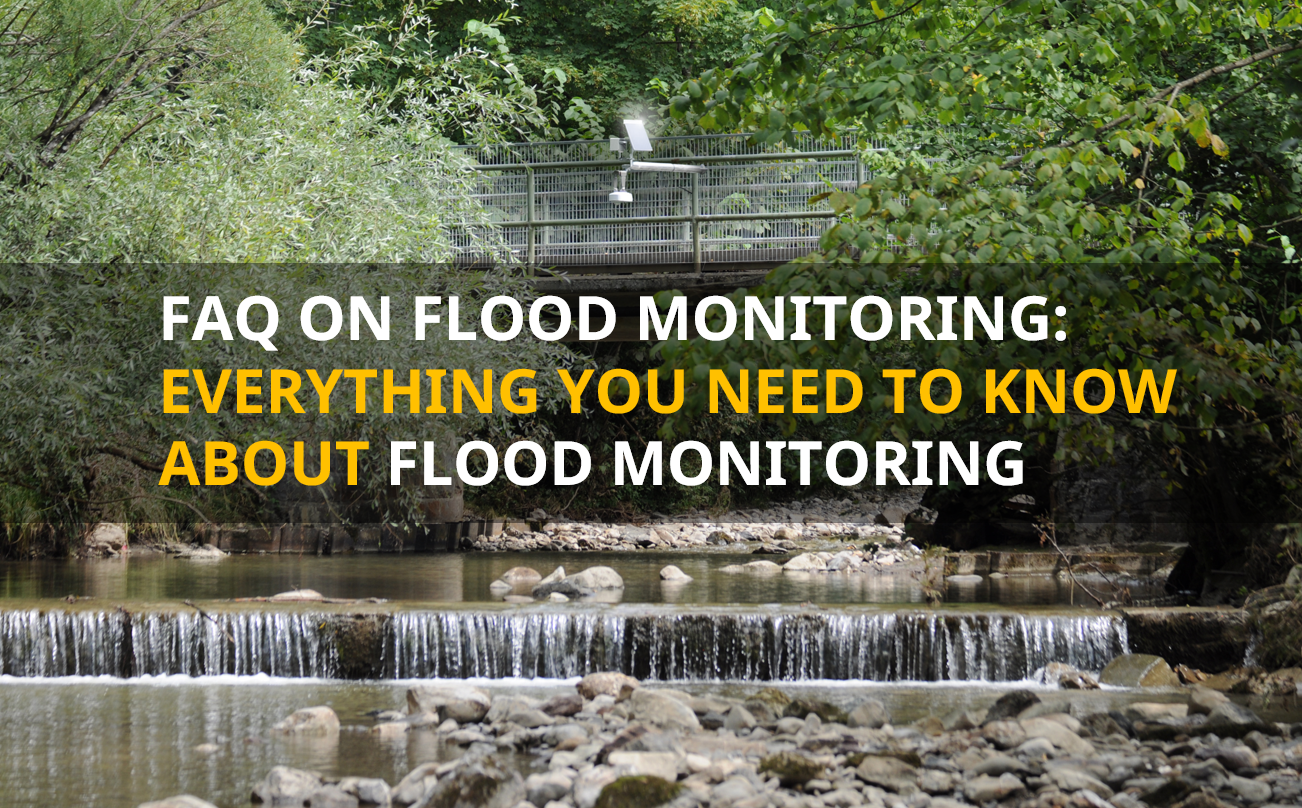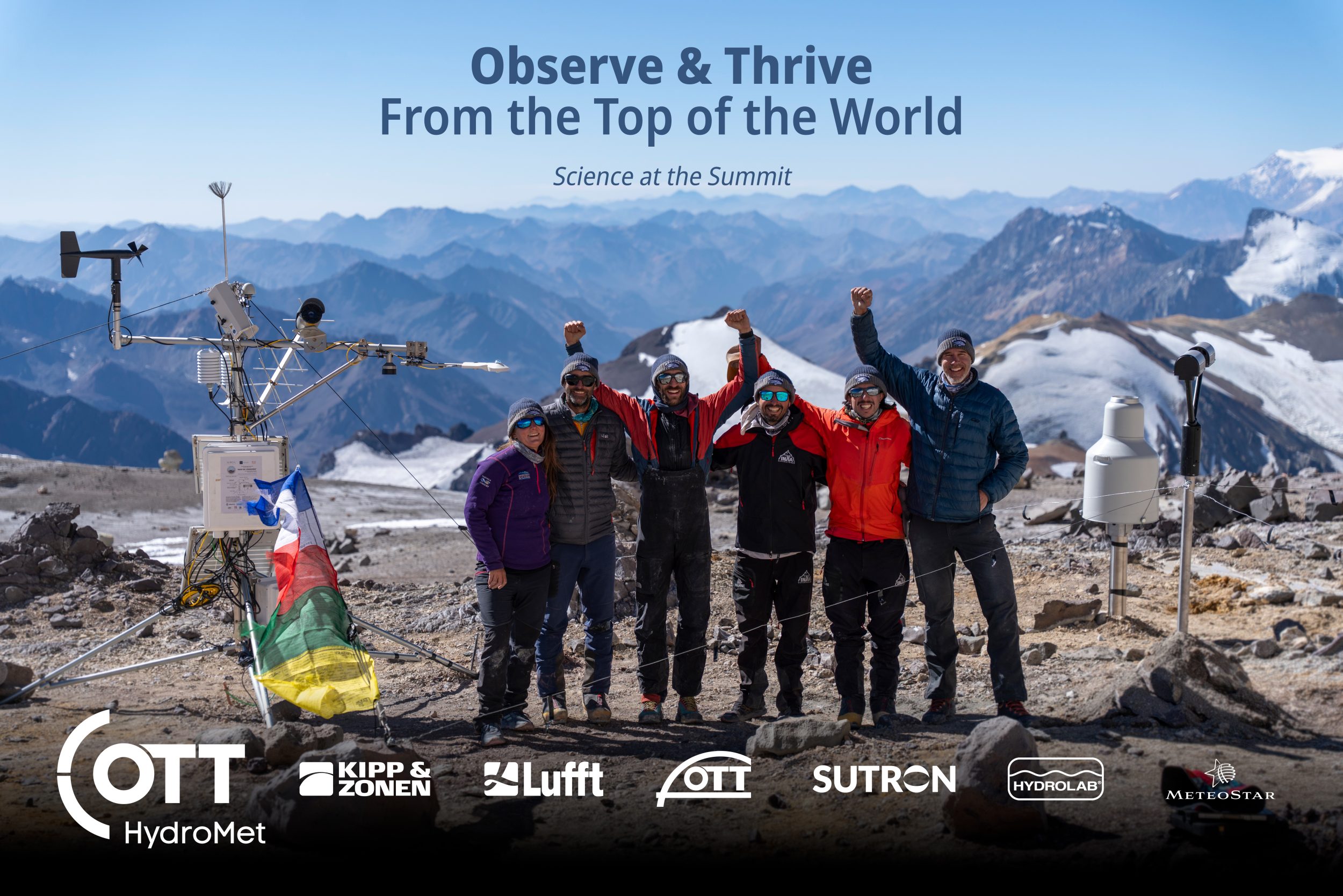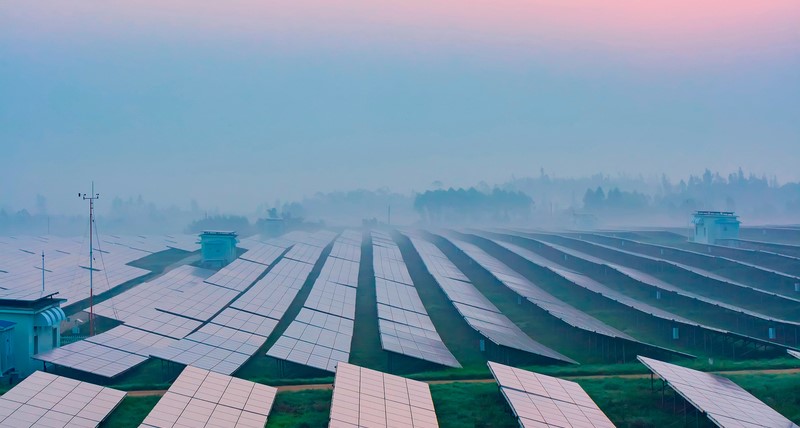In early 2023, the world’s largest and most efficient solar concentrator was installed in Western India to power a hospital and research center. The impressive construction will produce steam for multiple applications as well as electricity for air conditioners. To maximize irradiance yield, the engineers are aligning the 26-ton concentrator with the path of the sun, utilizing data from the RaZON+ sun tracker by OTT HydroMet’s product brand Kipp & Zonen.
Often times, the first thing that comes to mind when talking about solar energy is photovoltaics (PV). That is based on the photovoltaic effect: Light particles known as photons hit a semiconductor and stimulate the excitation of electrons. Due to an electrical field within the semiconductor (space-charge region) these electrons move towards a charged electrode. As a result, direct current flows.
Lenses and mirrors increase the radiant intensity
Another method to harness the sun’s power is with lenses or mirrors. The basic principle is to collect sunlight by focusing it on one point. In physical terms, reducing the surface area increases the radiant intensity. If you have ever burnt a newspaper by focusing sunlight with a magnifying glass, you know this effect well. A more efficient way to utilize this effect on a large scale is with mirrors. Mirrors act as concentrators, as seen in this project, creating Concentrated Solar Power (CSP).
In early 2023, the world’s largest and most efficient solar concentrator was installed at the Kailash Cancer Hospital and Research Centre at Muni Seva Ashra in Goraj close to Vadodara in Western India.
The “SG4 Big Dish” – the name of the largest solar concentrator – has a reflective area of around 500 square meters. It consists of 380 paraboloidal mirrors that catch the incoming light and reflect it on a solar thermal collector that sits at the focal point of the mirrored bowl. That thermal collector is essentially a pot to boil water or other fluids pumped upwards in a tube.
Steam and electricity for the Kailash cancer hospital
The SG4 Big Dish generates 400 kilograms of steam per hour. This is enough to cook 2,000 meals a day and also handle laundry and sterilization. Additionally, steam will be used to generate electricity through a turbine.
Different to photovoltaics, which captures photons from every angle including scattered or diffused light, CSP relies solely on direct normal irradiance (DNI), the light coming directly from the sun.
The Big Dish must move during the day to perfectly align with the path of the sun. Below is a video of a steam generation test conducted by the Australian National University in 2010.
Tracking azimuth and zenith angles of the sun
A solar concentrator is used to focus the solar radiation onto a receiver. This concentrator needs to be aligned perpendicular to the direction of the sun, which requires the use of a dual-axis tracking mechanism. The 26-ton construction stands on a circled railway for the azimuth rotation and can tilt the concentrator with the zenith angle.
To ensure the accuracy of the tracking mechanism, it is important to have redundant systems in place, which rely on ground data, mathematical equations, and satellite data. The accuracy of the tracking mechanism is critical to optimize the performance of solar thermal systems.
The role of atmospheric pressure and temperature
Additional meteorological parameters, such as atmospheric pressure and temperature, have a direct impact on the performance of solar thermal systems. In low-temperature applications, these variables are not as critical. However, in high-temperature applications, the pressure and temperature become critical variables that must be closely monitored and controlled.
A decrease in atmospheric pressure can result in an increase in the production of steam, while an increase in pressure can lower the production of steam. This is because at low pressure, the properties of water molecules change, and heat is required to boil water at lower temperatures. Conversely, at high pressures, water requires more heat to reach boiling point.
Goodbye blue sky – cloud movement
Cloud movement is a significant challenge for solar thermal systems, as it has a direct impact on the amount of solar radiation received by the mirrored surface. It is important to have a system in place to monitor cloud movement and convert this information into a function of time.
Unmonitored cloud movement it can lead to a significant reduction in the flow rate of water, which can cause the receiver to dry out or even melt down. This is a major barrier to the widespread adoption of solar thermal energy, as there is currently no adequate system available to address the issue.
Find the right sun tracker system for your purpose
To fully optimize the performance of solar thermal systems, it is important to have accurate and reliable data on solar radiation. OTT HydroMet is a leading manufacturer of instruments to measure solar irradiance. Across Kipp & Zonen product brand portfolio, there are three sun tracker systems to choose from.
In this project, the engineers rely on the Kipp & Zonen RaZON+ sun tracker. It is an all-in-one solar monitoring system that provides global (GHI), direct (DNI) and diffuse (DHI) irradiance and can be expanded to a full weather station with additional sensors. GPS and data logging are integrated. The RaZON+ comes with a customer-friendly interface and anti-soiling design to reduce maintenance, so customers can focus on what matters most: generating clean and sustainable energy.
Further reading
- Project page on the website of Sunrise CSP
- Hospital website: Solar energy at Muni Seva Ashram
- Product page: Kipp & Zonen RaZON+ Sun Tracker
Title image: Sunrise CSP
